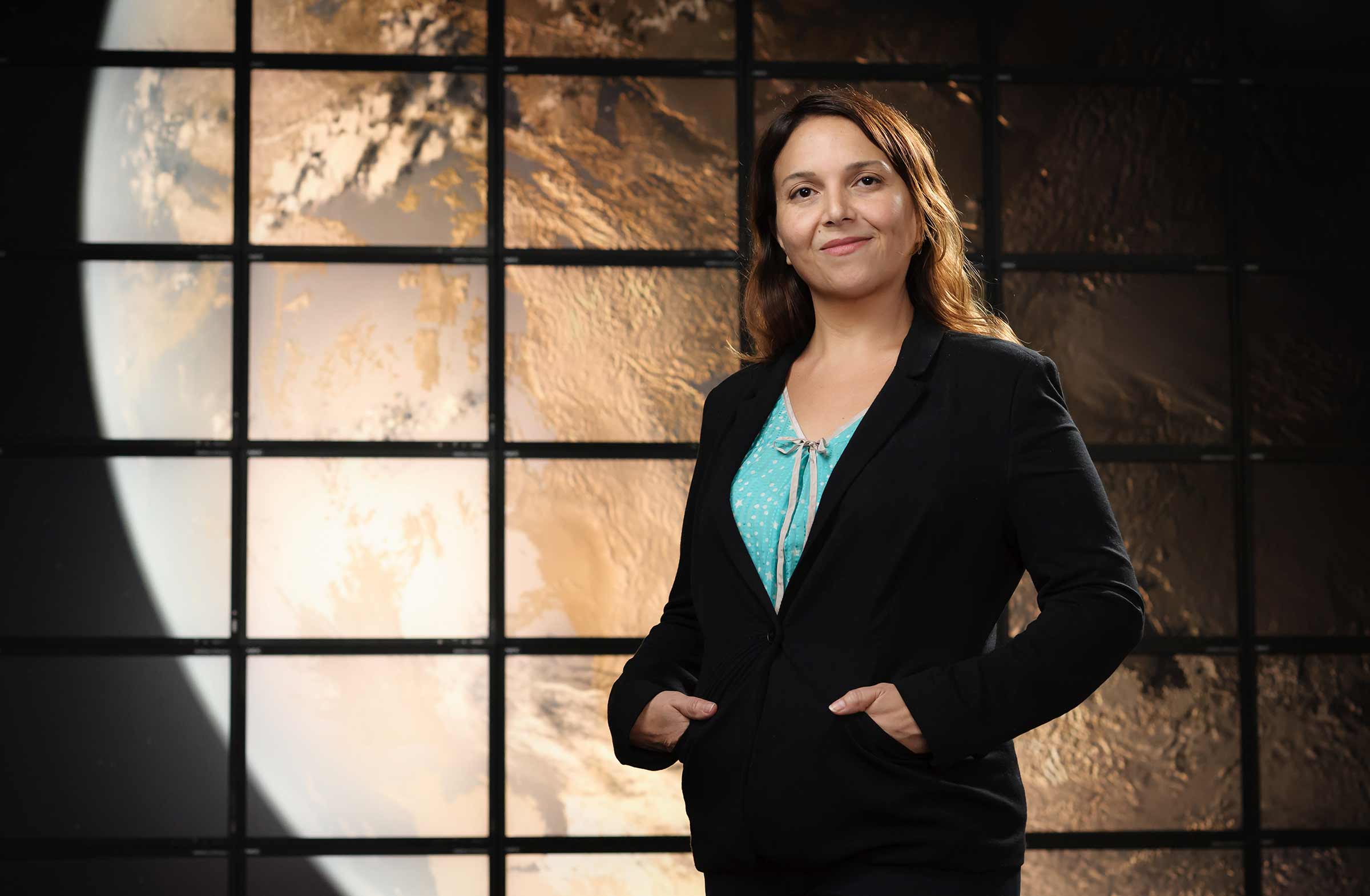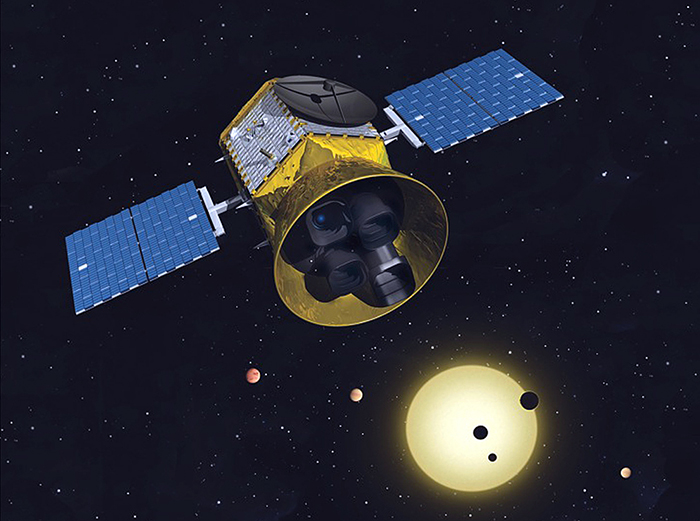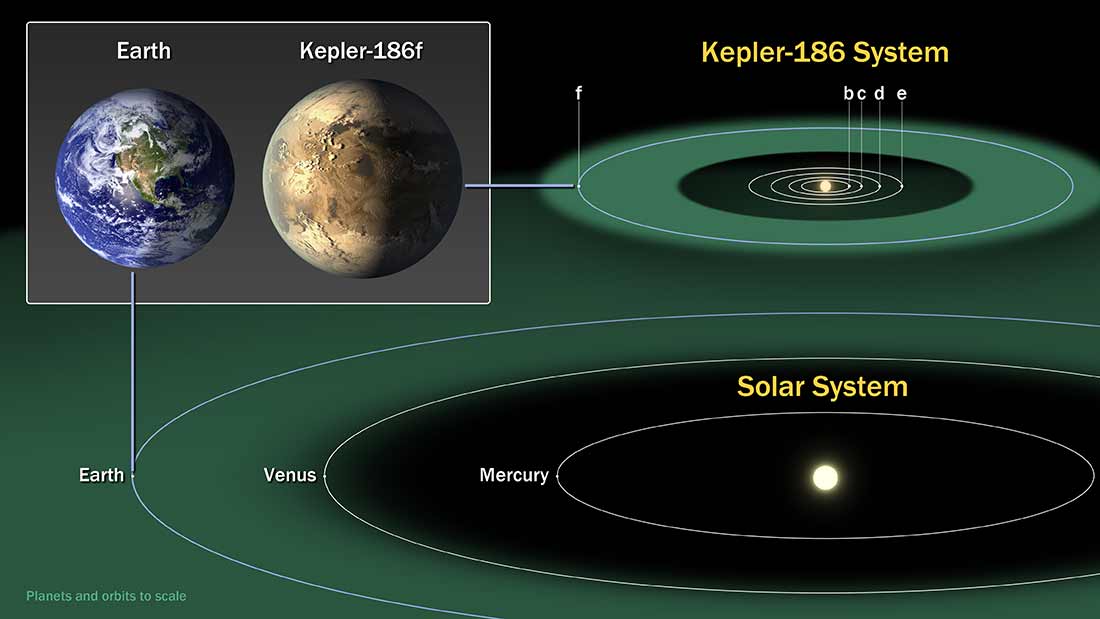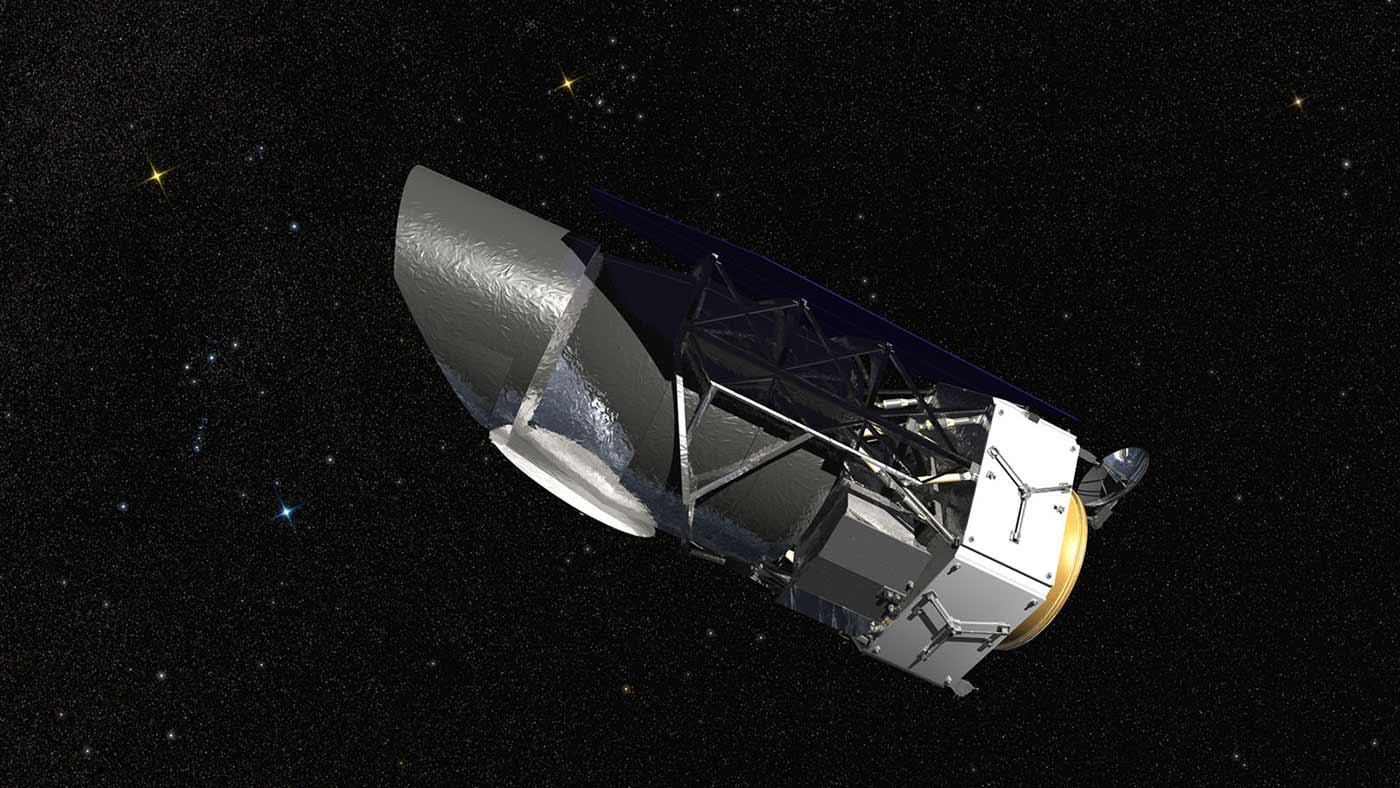
By:
- Kristin Schafgans
Published Date
By:
- Kristin Schafgans
Share This:
Planet Hunter
Triton Alumnae: Making an Impact Elisa Quintana, ’01, Physics

Elisa Quintana. Photo by NASA Ames

She works as…an astrophysicist at NASA Goddard Space Flight Center, searching for planets that orbit nearby stars.
The best part of her day is…I really enjoy public outreach. I didn’t have many role models when I was young, and so my career path was untraditional and tough at times. I think sparking interests in STEM fields when students are young is so important. Students need to know that careers like mine are even an option!
Advice every UC San Diego student should know… Step out of your comfort zone. Find a way to participate in any research or project that you find interesting. Also, take time to learn about all of the career options that STEM degrees offer—academia is not the only path.
One thing most people don’t know about her… I was recently invited to participate in a panel at a Star Trek convention on “science fiction meets science fact.” I admitted to my colleagues that I had never watched Star Trek—and got an intervention. I ended up having to cram so many episodes to learn about Star Trek!

A conceptual image of the TESS mission. Photo by MIT
Elisa Quintana didn’t always see herself becoming a NASA scientist. She had a bit of a rocky start at school before transferring to UC San Diego to study physics, where she chose astronaut and physics professor Sally Ride as her advisor. Today, this UC San Diego graduate is searching for exoplanets—planets outside of Earth’s solar system—and inspiring a new generation of students to get interested in science.
From the NASA Goddard Space Flight Center in Maryland, Quintana sifts through vast amounts of data looking for subtle clues—distinct patterns that could signal the presence of a new planet. Before this, working on the Kepler mission at NASA Ames, Quintana led the team that made the discovery of the first Earth-like planet within the habitable zone of another star. The discovery made headlines, exciting the imaginations of scientists and citizens around the globe.
Now, she’s searching for planets closer to home. The TESS mission, set to launch in March 2018, will survey the solar neighborhood to identify planets ranging from Earth-size to gas giants. Quintana is also part of the WFIRST mission, which will perform a broad set of scientific investigations in both dark energy research and exoplanet detection.
An unconventional undergraduate experience
As a high school student, Quintana didn’t know what she wanted to do in life. She recalls uneven success in class, sometimes earning top grades but often rebellious. It was at Grossmont College that she first got excited about science—physics in particular. She transferred to UC San Diego and took advantage of a one-of-a-kind opportunity to learn from Sally Ride, the first American woman in space.
“I decided to declare physics as my major, partly because I thought it would be interesting and partly because I wanted to have Sally Ride as my official advisor,” she said. “Who wouldn’t?”
Ride proved to be a great mentor. She encouraged Quintana to get involved with a project called KidSat (now known as EarthKam) that allows middle and high school students from across the country to request photographs of Earth to be taken from the space shuttle.
UC San Diego had a small Mission Operations Center, based on the one at Johnson Space Center, staffed by undergraduates in order to facilitate the requests to have pictures taken of various places on Earth. Quintana’s job was to calculate the space shuttle orbits to determine when the shuttles would be in position to take the desired image.

An artistic concept of Kepler-186f, the first validated Earth-size planet to orbit a distant star in the habitable zone. Photo by NASA Ames/JPL-Caltech/T. Pyle
“It was really fun, a lot of hard work, and I got to visit Johnson Space Center, the Jet Propulsion Lab and other space-related companies, so I was exposed to many aspects of working in space science and engineering,” she said.
On the hunt for planets
After UC San Diego, Quintana went to the University of Michigan, where she focused her doctoral research on the question of how planets form. She did part of her thesis research at NASA Ames in the Bay Area, and ended up staying there to work on the Kepler exoplanet mission.
Launched in 2009, the Kepler mission was designed to survey a portion of the Milky Way in search of Earth-size planets in or near habitable zones—the orbital region around a star in which it’s possible for liquid water to exist on a planet’s surface.
Quintana and her team looked through the enormous record of data transmitted from NASA’s Kepler Space Telescope as it measured the flickering light of the 150,000 stars in its gaze. Subtle patterns in the record of light would give them a clue to a potential planet.
Eventually, their patience paid off. In April 2014, NASA announced the discovery of the first Earth-size planet in the habitable zone of another star. Kepler-186f, residing about 500 light-years away, marked a significant step toward finding other worlds like planet Earth.

This diagram compares the planets of our inner solar system to Kepler-186, a five-planet star system about 500 light-years from Earth in the constellation Cygnus. Photo by NASA Ames
It also opened up new areas of exploration in the search for exoplanets. In the early days of planet hunting, before Kepler, scientists focused on Sun-like stars to search for Earth-size planets. That’s what was known to be possible. But while Kepler-186f is similar in size to our planet, the star it orbits does not resemble our Sun. It’s a small, cool star. An M dwarf. The Kepler mission found that many extrasolar planets orbit this kind of star.
“M dwarfs are the most numerous stars,” Quintana stated in the announcement. “The first signs of other life in the galaxy may well come from planets orbiting an M dwarf.”
In another twist, the M dwarf revelation led Quintana to collaborations with a former UC San Diego classmate, Adam Burgasser, who is now a physics professor at the campus. Burgasser and Quintana worked together on the KidSat project with Sally Ride, but while Quintana went on to study planets, Burgasser focused his research on small, cool stars. Earlier this year, Burgasser and his team contributed to the discovery of TRAPPIST-1, the first known system of seven Earth-size planets around a single star—three of which are in the habitable zone.
“We never thought our fields would merge,” said Quintana. “Now we work on many projects that involve studying planets around these cool stars, and how their environments affect the potential habitability of the planets that orbit them. We’re currently observing a nearby star, Wolf 359. The star is known for being in a Star Trek episode, although we don’t know if it has any planets—yet.”
Inspiring the next generation
On the WFIRST mission, Quintana’s job involves leading the scientific direction of communications to both the astronomical community and the general public. Public outreach, particularly to young people, is something Quintana especially enjoys.
“The field I study, exoplanets, is a field that anyone can understand and relate to, so it’s easy to inspire young people to pursue careers in physics and astronomy,” she said.

WFIRST, the Wide Field Infrared Survey Telescope, shown in an artist's rendering. Photo by NASA/Goddard Space Flight Center/Conceptual Image Lab
Quintana didn’t have many role models when she was young. Her career path was untraditional, a bit longer than typical, and tough at times. That’s why she believes getting students interested in STEM fields at a young age is so important, so that they will know what options are open to them.
“Many students that pursue a Ph.D. believe that academia and teaching is the only route, but that path is not for everyone,” she said. “There are so many fun and rewarding things you can do. Degrees in STEM fields give you so much flexibility.”
As a student, Quintana may not have been able to picture herself working at NASA and exploring other worlds. But now she’s showing a new generation of students that the possibilities really do stretch beyond the imagination.
Share This:
You May Also Like
Stay in the Know
Keep up with all the latest from UC San Diego. Subscribe to the newsletter today.


